
#
La variedad de merengues siempre ha sido a elección de las personas y de su gusto al paladar, pero no existe un secreto, sino una buena técnica al momento de realizarlos. Cabe destacar que existen tres tipos de merengue: el merengue francés, el merengue suizo y el merengue italiano. El merengue francés se elabora con la misma cantidad de claras y el doble de azúcar, sin necesidad de cocción. A diferencia de esto, el merengue suizo utiliza el doble de azúcar que de claras y se lleva a baño María hasta que el azúcar se disuelva. El último, el merengue italiano, es un poco más laborioso, ya que se debe agregar una porción de agua para hacer un almíbar antes de proceder a montar el merengue. Todos estos tipos tienen sus técnicas, y como mencioné, todo depende del gusto de cada persona.
Personalmente, me gusta utilizar el merengue suizo, aunque, a diferencia del merengue italiano, no es tan rendidor como parece. Sin embargo, prefiero realizar el merengue italiano, ya que con esta técnica es mucho más fácil y me permite obtener un resultado más favorable según lo que deseo. En esta publicación, intentaré explicarte de manera sencilla, fácil y práctica cómo elaborar un merengue italiano sin almíbar. Así es, sin almíbar, ya que no utilizamos el procedimiento habitual de solo azúcar y agua, sino que existe otra forma de hacerlo que nos permitirá obtener un merengue bastante firme, ideal para cubrir y decorar nuestro pastel. Cabe destacar que este merengue es un poco más sedoso y mucho más rendidor.
En la fotografía, dejaré explicada la fórmula para obtener un merengue italiano bastante fácil. Esta receta es la que empleé para el resultado que ustedes están viendo. Es importante señalar que puedes utilizar cualquier cantidad de claras, siempre y cuando cumplas con la fórmula para obtener el resultado deseado. Te recomiendo pesar muy bien los ingredientes y seguir al pie de la letra las instrucciones para asegurar el éxito.

#
The variety of meringues has always been a matter of personal choice and taste, but there is no secret to making them, just a good technique. It should be noted that there are three types of meringue: French meringue, Swiss meringue, and Italian meringue. French meringue is made with equal parts egg whites and sugar, without cooking. In contrast, Swiss meringue uses twice as much sugar as egg whites and is cooked in a double boiler until the sugar dissolves. The last type, Italian meringue, is a little more laborious, as a portion of water must be added to make a syrup before proceeding to whip the meringue. All these types have their own techniques, and as I mentioned, it all depends on each person's taste.
Personally, I like to use Swiss meringue, although, unlike Italian meringue, it is not as efficient as it seems. However, I prefer to make Italian meringue, as this technique is much easier and allows me to achieve a more favorable result according to what I want. In this post, I will try to explain in a simple, easy, and practical way how to make Italian meringue without syrup. That's right, without syrup, since we don't use the usual procedure of just sugar and water. There is another way to make it that will allow us to obtain a fairly firm meringue, ideal for covering and decorating our cake. It should be noted that this meringue is a little silkier and much more efficient.
In the photo, I will explain the formula for making a fairly easy Italian meringue. This is the recipe I used to achieve the result you see here. It is important to note that you can use any amount of egg whites, as long as you follow the formula to get the desired result. I recommend weighing the ingredients carefully and following the instructions to the letter to ensure success.
---

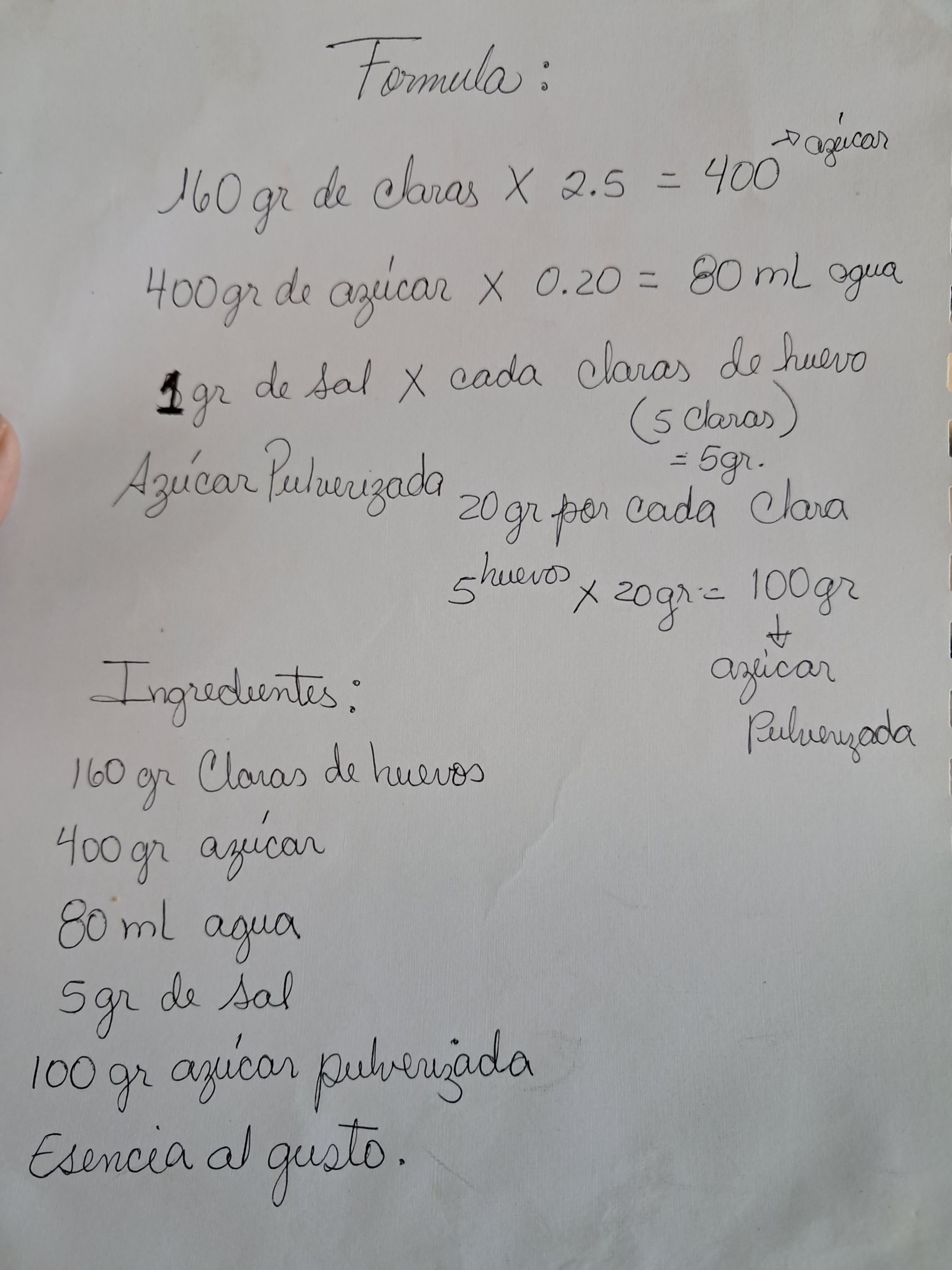

**Paso 1:** Pesa todos los ingredientes y limpia el área de trabajo.
**Paso 2:** Separa las yemas de las claras de cada huevo con cuidado. Es importante que sean huevos frescos y de buen tamaño.
**Paso 3:** Utiliza una olla libre de grasa, preferiblemente una que uses para este tipo de procesos, o lávala muy bien antes de usar.
**Paso 4:** Con las claras pesadas, agrega el azúcar granulada, la sal y el agua, y lleva la mezcla a baño María o al fuego directamente. Recuerda tener control del fuego, porque si te descuidas, terminarás haciendo una tortilla dulce, y eso no es lo que queremos. Revuelve bien hasta disolver completamente el azúcar. Recuerda que este paso lo hacemos directamente y no hacemos el almíbar aparte, como es costumbre.
**Paso 5:** Lleva la mezcla a una batidora, preferiblemente de pedestal; si usas una manual, el tiempo de batido será más prolongado. En este caso, la batidora de pedestal tiene mayor velocidad. Comienza a batir de menor a mayor velocidad. A mitad del proceso, o cuando empieces a ver que se forman ondas, añade el azúcar pulverizada que habías pesado previamente. Después, agrega la esencia y continúa batiendo hasta obtener picos firmes. Durante este proceso, observarás que la mezcla se torna de un color más oscuro. En mi caso, la quería de color verde porque estaba probando unos colorantes en polvo. Este paso lo añadí cuando llevé la mezcla al fuego; esto hace que el color se intensifique y quede más brillante. Es importante señalar que puedes hacerla totalmente blanca y luego porcionar para teñir. Te recomiendo usar colorantes en polvo, ya que no alterarán la consistencia de la mezcla. También existe una técnica para teñir las porciones del merengue; si usas colorantes líquidos, asegúrate de que sean de buena calidad y preferiblemente en gel, para mantener la firmeza del merengue.
Puedes visualizar la gran variedad de cosas que podemos hacer con un merengue firme, estable y delicioso. Puedes seleccionar la esencia de tu preferencia. En mi caso, usé nata y coloqué el merengue en un pastel sencillo, realizando un proceso bastante rápido para cubrirlo. Además, es una opción económica, rendidora y muy sabrosa. Recuerda que todo depende de la técnica utilizada durante la preparación. Ten cuidado de no tener herramientas grasas y asegúrate de que tu batidora esté limpia; cualquier residuo de manteca o margarina puede arruinar la preparación. No te recomiendo el merengue italiano para hacer suspiros; si esta es tu intención, te sugiero optar por el merengue suizo.
**Step 1:** Weigh all the ingredients and clean the work area.
**Step 2:** Carefully separate the yolks from the whites of each egg. It is important to use fresh, good-sized eggs.
**Step 3:** Use a grease-free pot, preferably one that you use for this type of process, or wash it thoroughly before use.
**Step 4:** With the egg whites weighed, add the granulated sugar, salt, and water, and place the mixture in a double boiler or directly on the stove. Remember to keep an eye on the heat, because if you're not careful, you'll end up making a sweet omelet, and that's not what we want. Stir well until the sugar is completely dissolved. Remember that we do this step directly and do not make the syrup separately, as is customary.
**Step 5:** Transfer the mixture to a mixer, preferably a stand mixer; if you use a hand mixer, the mixing time will be longer. In this case, the stand mixer has a higher speed. Start mixing at a low speed and gradually increase the speed. Halfway through the process, or when you start to see waves forming, add the powdered sugar that you weighed earlier. Then add the essence and continue beating until stiff peaks form. During this process, you will notice that the mixture turns a darker color. In my case, I wanted it to be green because I was testing some powdered food coloring. I added this step when I heated the mixture; this makes the color more intense and brighter. It is important to note that you can make it completely white and then divide it into portions to dye. I recommend using powdered food coloring, as it will not alter the consistency of the mixture. There is also a technique for dyeing portions of the meringue; if you use liquid food coloring, make sure it is of good quality and preferably gel-based to maintain the firmness of the meringue.
You can see the wide variety of things we can do with a firm, stable, and delicious meringue. You can choose your favorite flavor. In my case, I used cream and placed the meringue on a simple cake, covering it in a fairly quick process. It's also an economical, high-yield, and very tasty option. Remember that it all depends on the technique used during preparation. Be careful not to use greasy tools and make sure your mixer is clean; any residue from butter or margarine can ruin the preparation. I do not recommend Italian meringue for making meringues; if this is your intention, I suggest you opt for Swiss meringue.
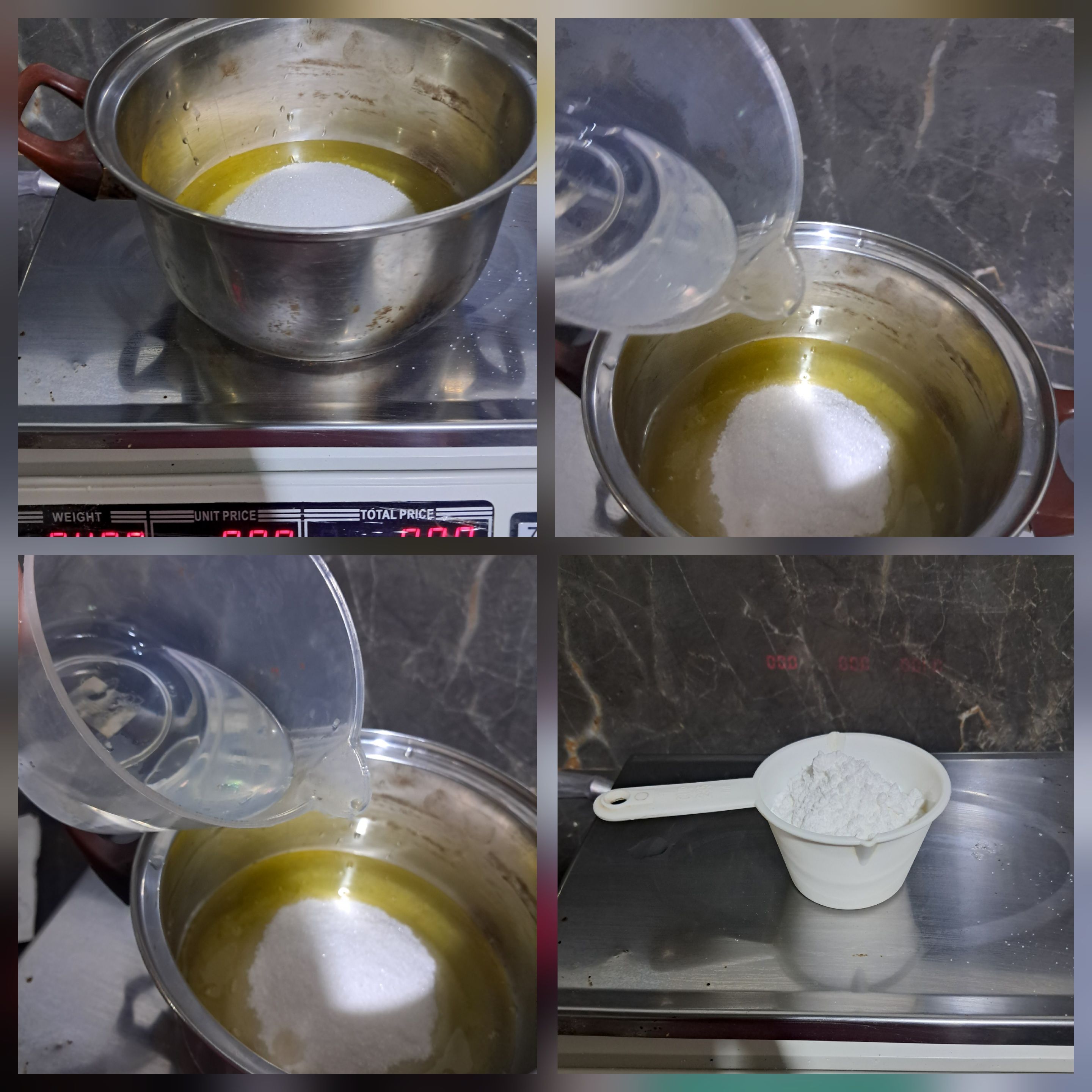
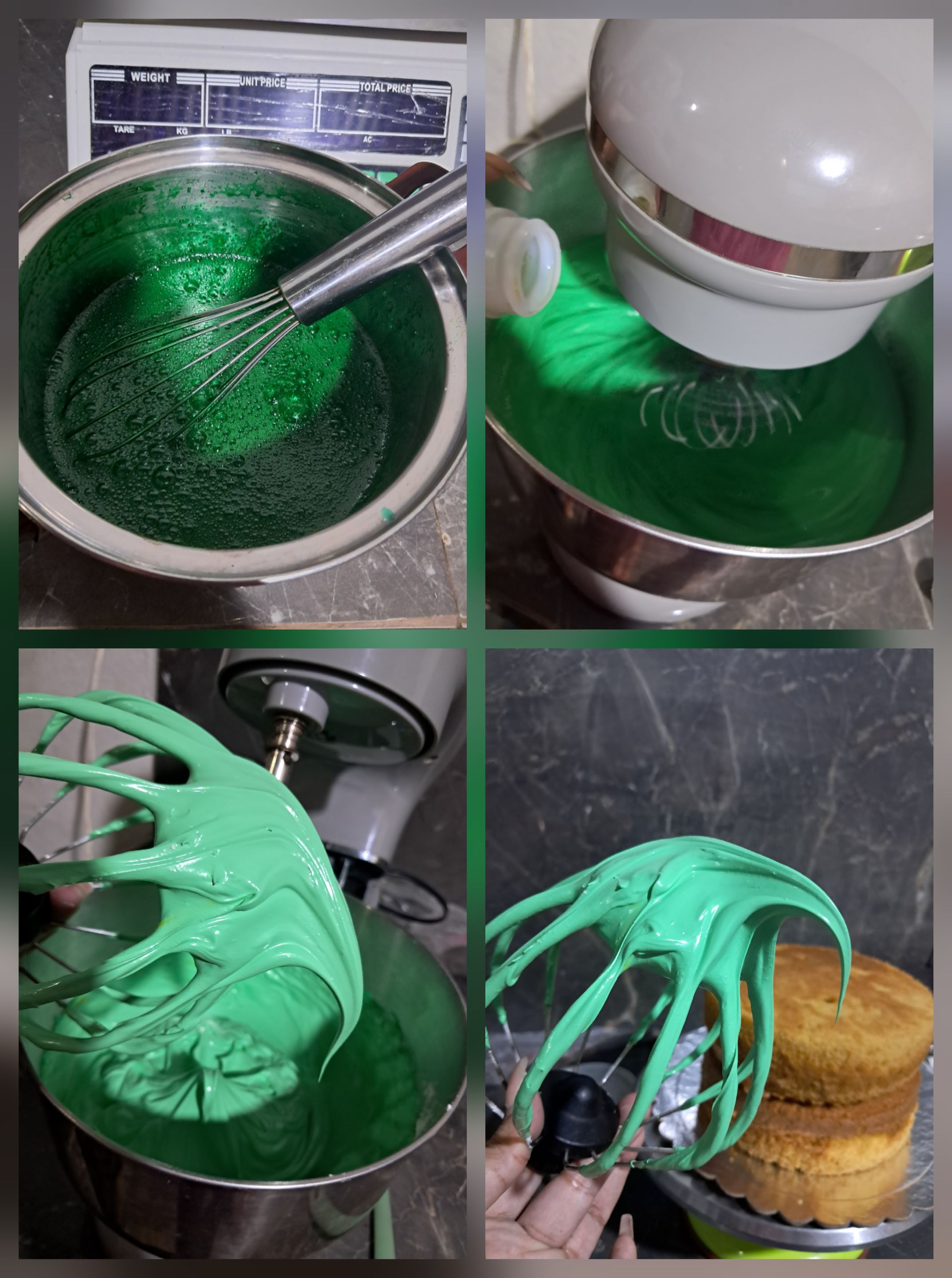
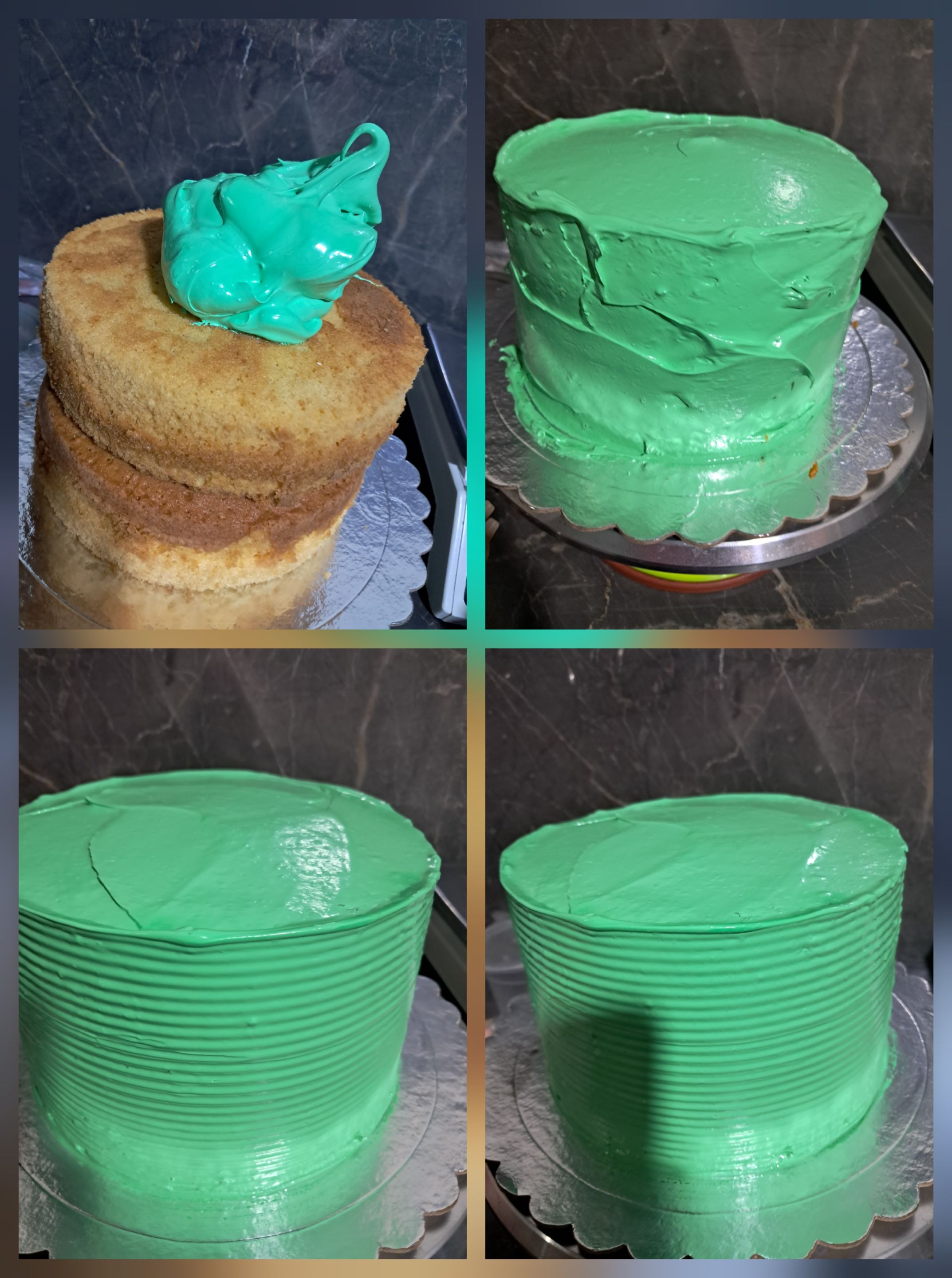
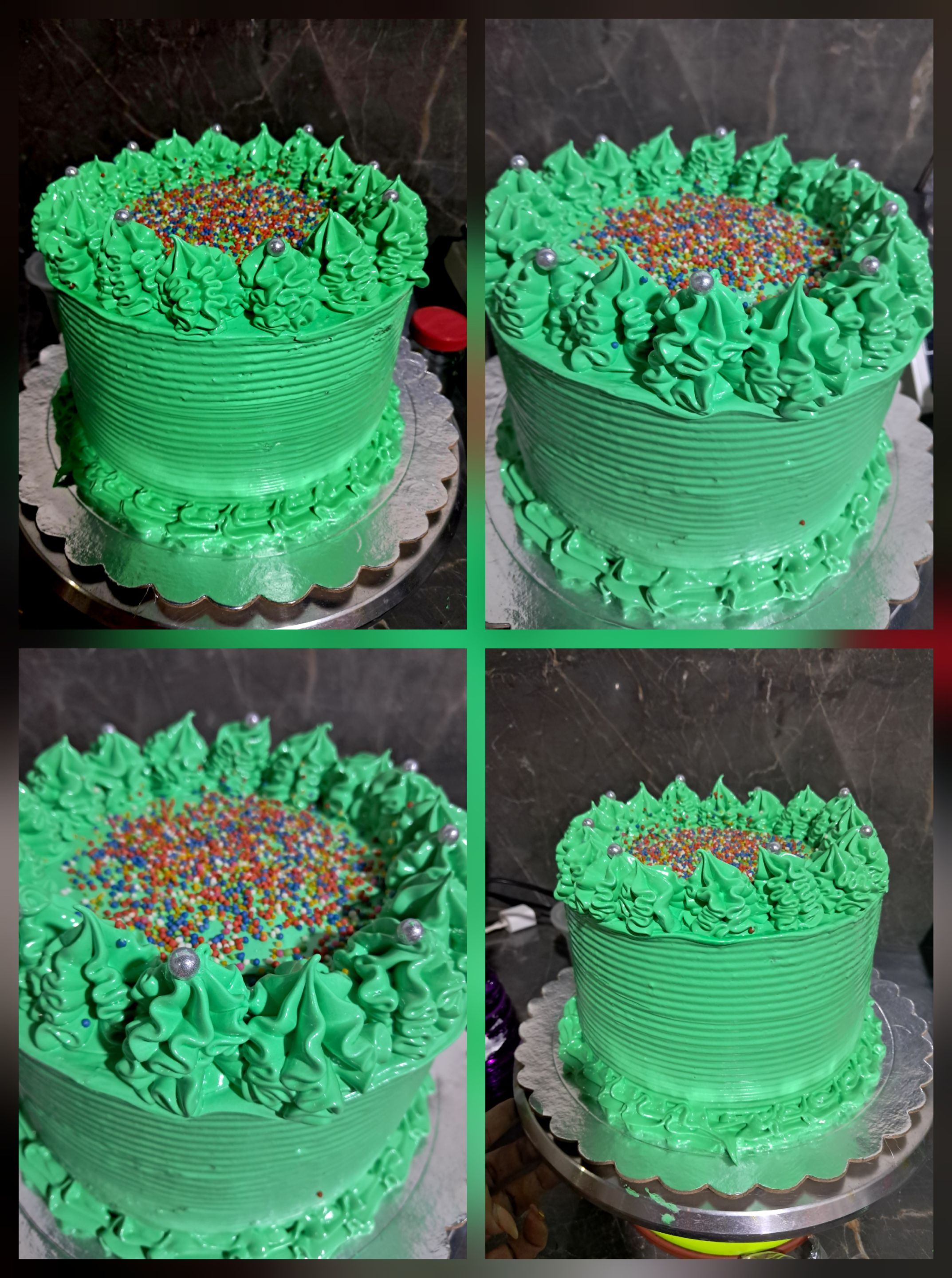
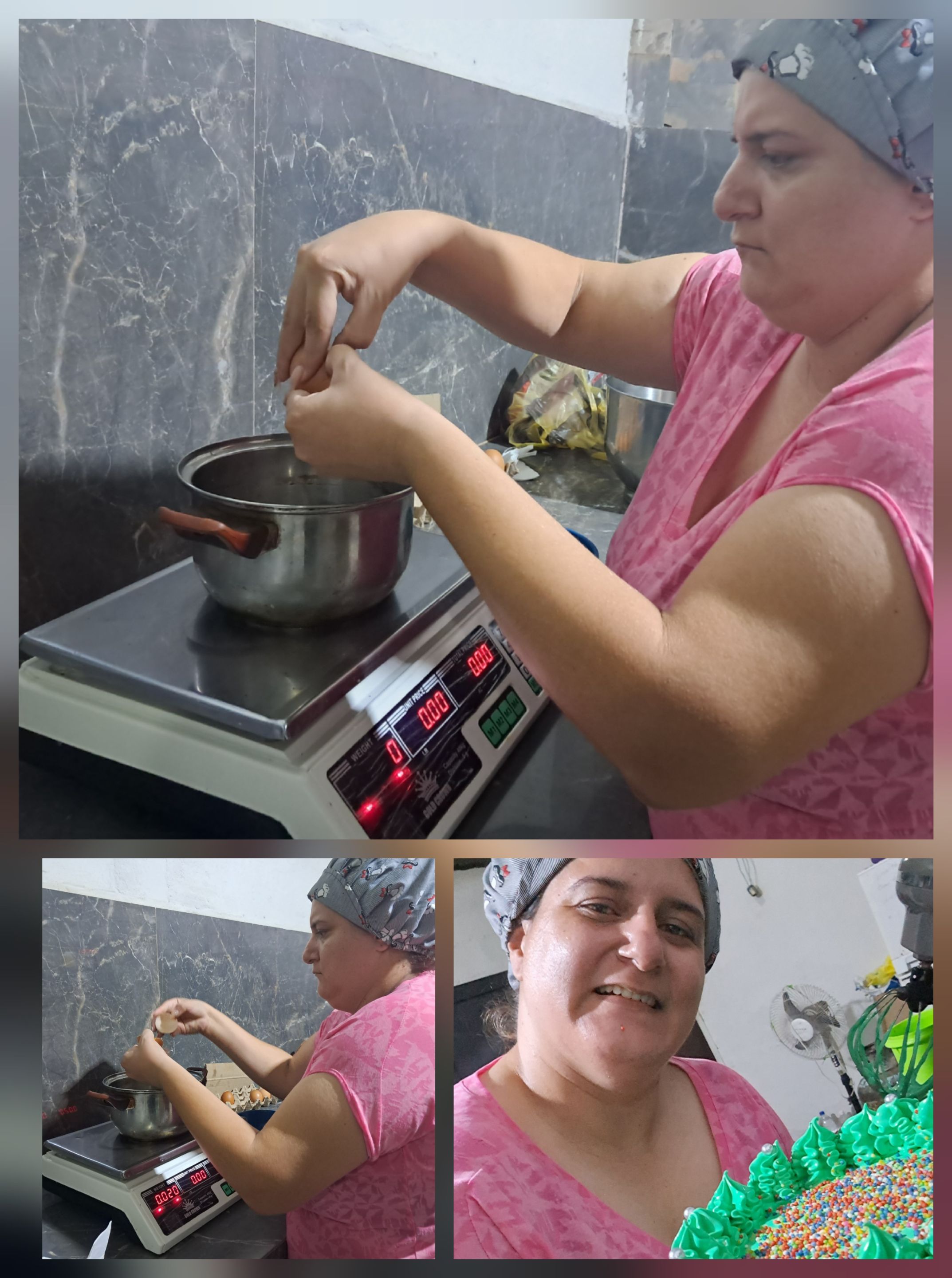
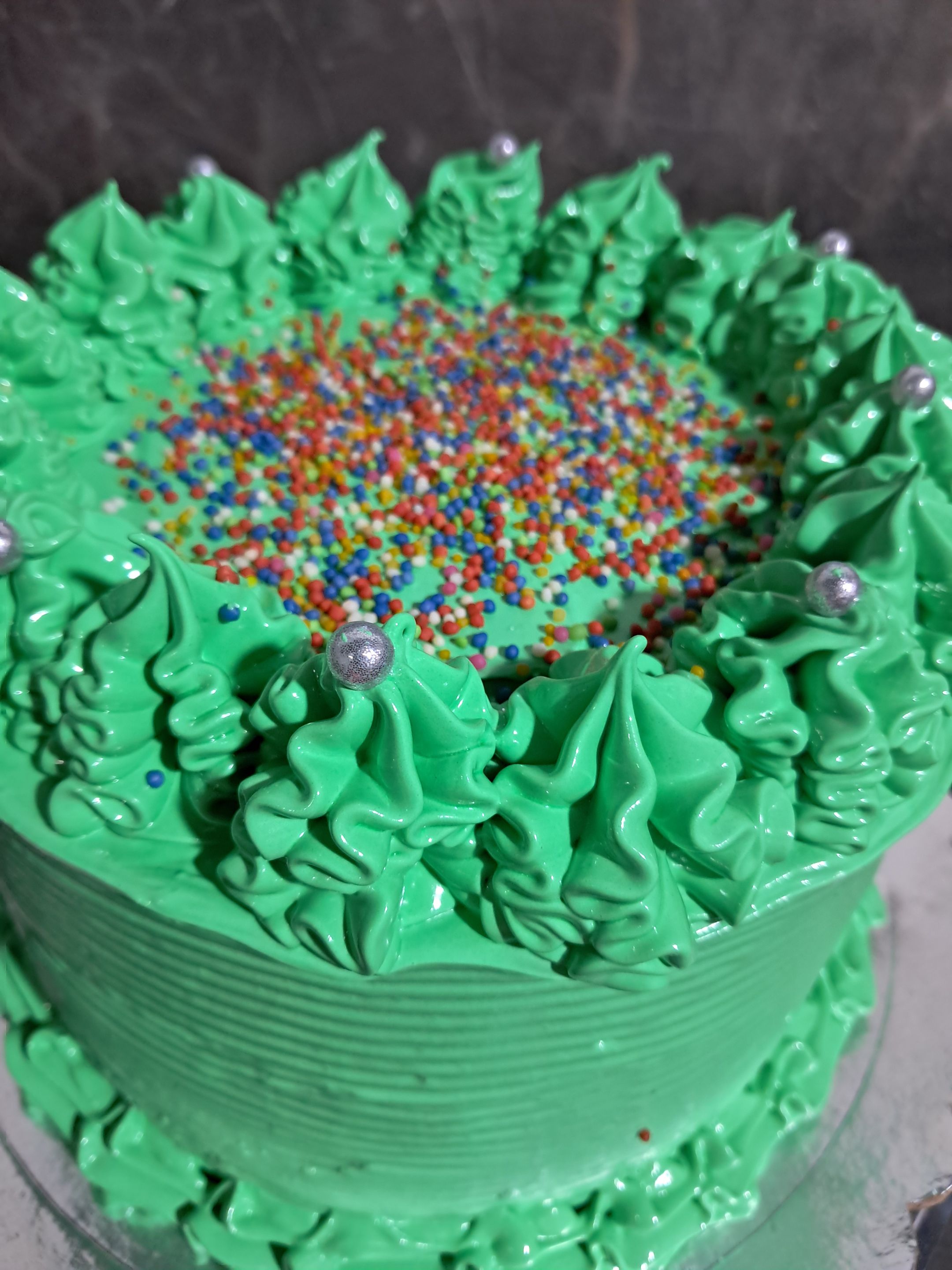
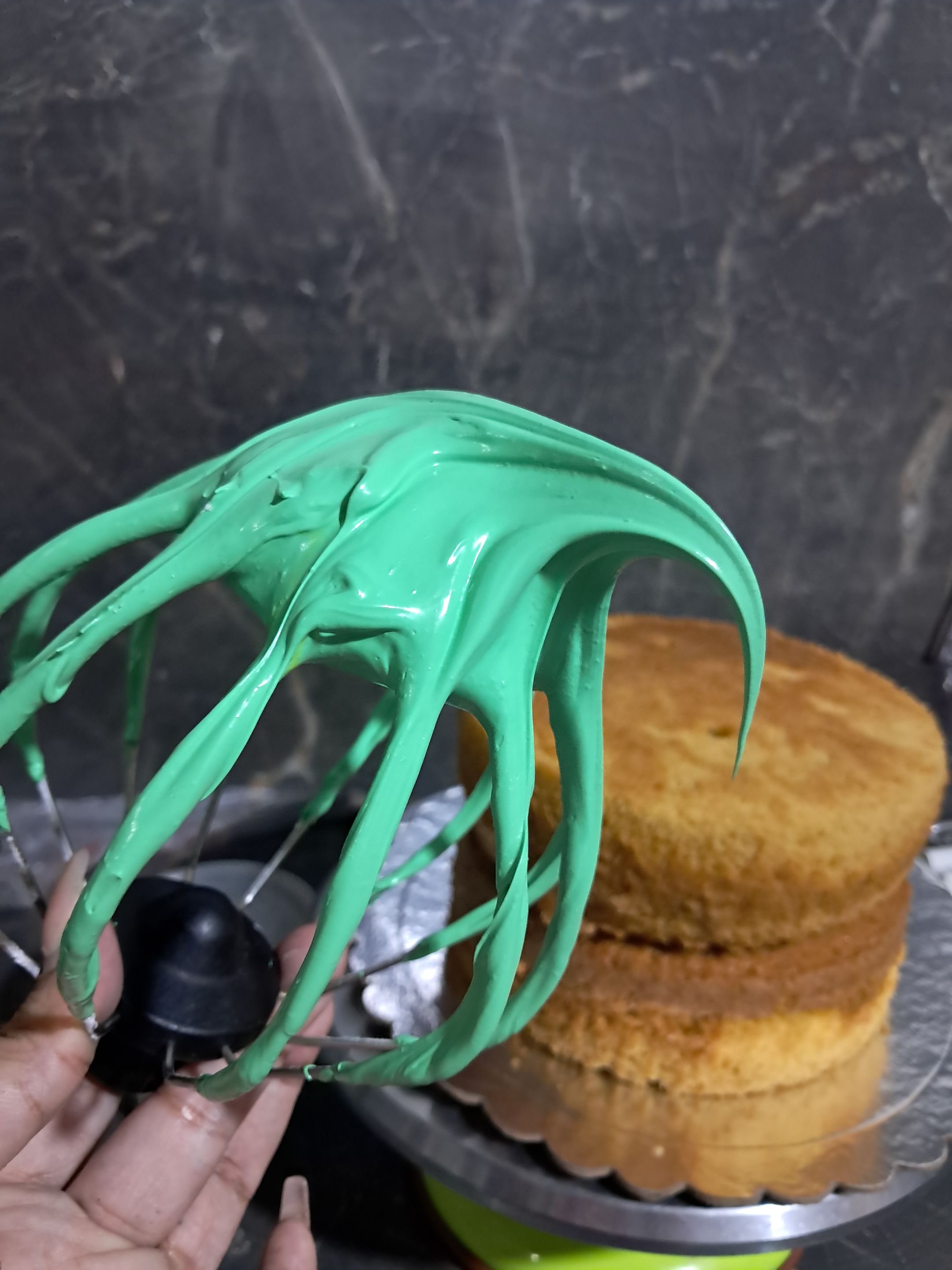
---
Todas las imágenes son de mi propiedad.
Utilicé traductor [DeepL versión gratuita](https://www.deepl.com/es/translator)
Imágenes, separadores, banner hechos en [Canva](www.canva.com)
Contenido original de @marytp20
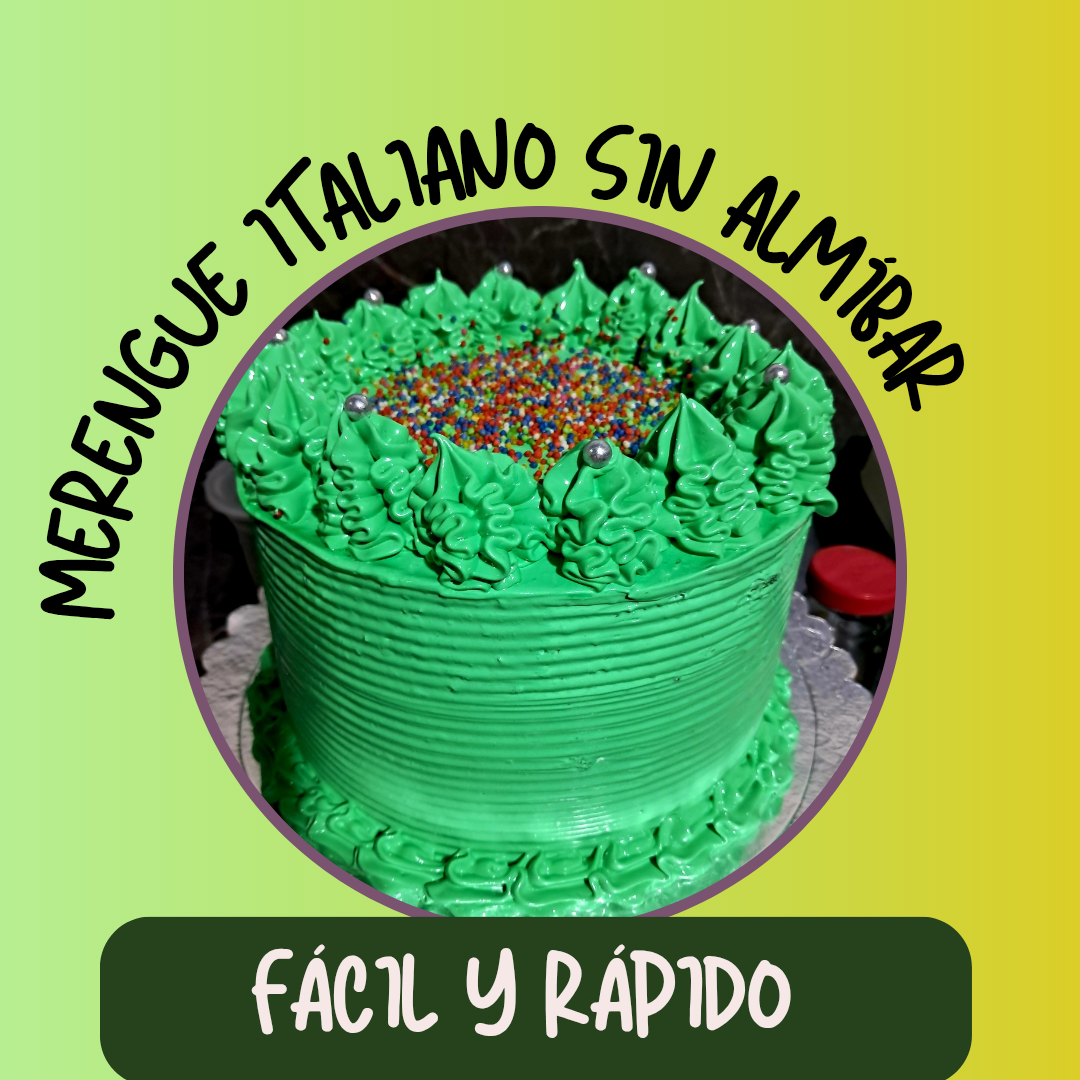
 #
#
 #
#
